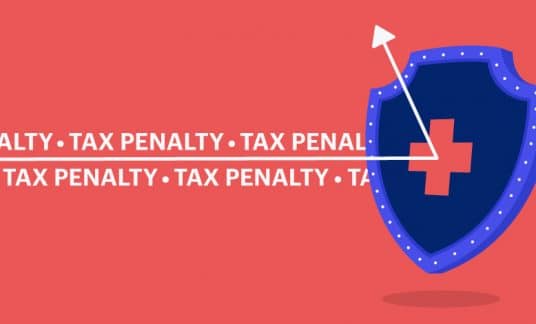Running a business is about deciding where you want to go and creating a plan on how to get there.
After you have defined your overall strategy, the task becomes how to stay on top of your finances, monitor the results and make corrections to any deviations from the plan as you go through the year to keep you on course toward your goals.
Consider spring cleaning your finances. Here are 12 steps for organizing business finances and actions to take that will keep you on track to achieving your objectives.
1. Set Your Goals
Start by setting your goals for the coming year. This could be as simple as setting a goal to increase revenue by 15%, achieve a gross profit margin of 40% and establish a net profit objective of 8%. Then break down these objectives into monthly figures to track as the year progresses.
2. Create a Profit Plan
If one of your goals is to achieve a profit margin of 8%, how do you intend to do that? What revenues do you need? How much are your fixed overhead expenses? How much revenue is needed to break even?
To reach your profit objective, you need to design a profit plan. For example, let’s say you have fixed overhead expenses of $400,000. If you have revenue of $1,250,000 and your gross profit margin is 40%, the result would be a profit of $100,000 or 8% of sales ($100,000 divided by $1,250,000). Therefore, to reach your 8% profit goal, you’ll need revenue of $1,250,000, a gross profit of 40% and fixed overhead expenses of $400,000 or less.
This is your profit plan.
After your profit plan is in place, work on reducing your break-even sales volume. In our example, the break-even sales volume is $1,000,000 ($400,000 overhead costs divided by the gross profit margin of 40%). The sooner your business reaches its break-even sales volume, the sooner it starts to earn a profit.
3. Analyze Your Budgets
Go over your budgets line by line. This includes your budget for operating expenses and your budget for general and administrative overhead costs.
Look around your office and justify everything you spend money on. No expense is sacred. Organize business expenses to concentrate on those costs that aren’t absolutely essential.
Here are some ideas to get your thinking started:
- Cancel any subscriptions and memberships you no longer use.
- Look for any tasks that could be outsourced rather than hiring full-time employees.
- Consider leasing equipment rather than owning.
- Analyze your cost for website hosting if you’re paying for premium services that you don’t need.
- Go paperless to eliminate costs of printing paper and ink cartridges.
- Get new quotes for insurance premiums on your vehicles, property and general business liability coverage.
- Contact your banker to find out if you can organize debt payments to get lower interest rates on your debt.

4. Review Monthly Financial Statements
Make arrangements with either your bookkeeper or your accountant to get your financial statements on a monthly basis. These should include your profit-and-loss statement, balance sheet and cash flow statement. You will also want to receive any subsidiary ledgers that are important to your business.
For example, if you sell on credit terms to your customers, you’ll want to receive an accounts receivable aging schedule, especially one that details accounts that are over 90 days past due.
5. Analyze Your Financial Metrics
Are you getting the financial metrics you need to adequately monitor the health and performance of your business?
Financial ratios fall into 4 types:
- Profitability: Are your profit margins meeting the objective from your profit plan? If not, why not? Is your product mix bringing in the gross profit margin it’s supposed to? Are your overhead expenses too high and reducing your net profit margin? If your project margins aren’t meeting your objectives, you need to find out why and implement the changes needed to bring your margins up to the goals.
- Liquidity – Profits are essential, but it takes liquidity for a business to pay its bills. One measure of liquidity is the current ratio, which is accounts receivable divided by accounts payable. This ratio needs to be in the range of 2 to 1. What is the current ratio in your business? If it isn’t high enough, what steps do you need to take to improve your liquidity?
- Efficiency: Efficiency ratios measure how effective you are using your current assets, specifically accounts receivable and inventory. Check these ratios to find out if the turnover is sufficient. Depending on the credit terms you give to your customers, receivables should be turning over 8 to 12 times per year. Inventory turnover depends on the type of industry you’re in.
- Leverage: Some debt is good, but too much debt is bad. Do you know what your debt leverage ratio is? A comfortable ratio is to have $1 in debt for each. In capital. Check the debt leverage ratio in your business. If it’s too high, make a plan to pay down your debt over the coming year.
Also look at your cash flow debt-service ratio. Do you have enough cash flow to meet your debt obligations in the event of an economic downturn? A safe debt-to-service ratio is to have $3 in free cash flow for each $1 in loan payments. If your debt-service ratio is too low, look at your cost of operations to find expenses you could cut to improve your cash flow. This might be in reducing direct labor cost or finding overhead expenses to cut.
6. Track Your Income
Review your customer and product mix. Are you selling your most profitable products to your best customers? Do you have financial reports that even give you this information?
If you can’t answer these questions, you should meet with either your bookkeeper or accountant to get help organizing finances and set up reports to give you this information. You may find that you’re selling low-profit items to the slowest paying customers. These relationships should probably be terminated so you and your sales force can concentrate on developing more business with good-paying customers buying high-profit products.
7. Track Your Expenses
If you haven’t already done so, have your accountant show you how to organize your monthly expenses to prioritize essential items and reduce or eliminate nonessential expenses.
Reducing your fixed monthly expenses will lower your break-even sales volume and increase overall profits.

8. Clean Up Your Paperwork
You don’t have to store copies of invoices and receipts in numerous cardboard boxes anymore. You can digitize your records.
Reduce the paperwork that you keep and store by digitizing your records. You can do this by purchasing a high-quality scanner to store your records on your computer’s hard drive or utilizing a third-party cloud service. Categorizing your digitized documents will make it much easier to prepare your tax returns. If you don’t already have one, invest in a shredder to dispose of your paperwork after you have scanned and stored them electronically.
9. Check Estimated Tax Payments
Review your projected profits and expected tax liabilities. Make sure your estimated quarterly tax payments are enough.
You don’t want an unpleasant surprise next spring when your accountant tells you owe the Internal Revenue Service a lot of money. Underpaying estimated taxes or paying them late will result in penalties and interest charges, so it’s better to plan for paying taxes and include them in your budget as a fixed expense.
10. Protect Your Business
Review the legal status of your business. If you’re still operating as a sole proprietor, it may be time to incorporate as either an LLC or an S corporation.
Operating as a sole proprietor exposes your personal assets, such as your house and personal bank accounts, to lawsuits resulting from your business operations. As your business grows, it becomes more important to separate personal and business assets.
11. Schedule Regular Money Meetings
Set aside a specific time every week and every month to review your numbers. Your weekly reviews could mean just checking your cash balances in your bank accounts or reviewing sales for the week. Your monthly reviews could be checking your liquidity ratios, monthly sales, gross profits, net profits and debt-service coverage.
This may seem tedious at first, but over time you’ll get used to the idea and it’ll become part of your regular routine. This is like a quick glance at the gas gauge on your car to make sure you have enough left to reach your location.
12. Plan for Retirement
Don’t lose sight of the big picture. Are you on track to reaching your retirement objectives? Are you putting money aside for yourself? Or do you plan on selling your business in the future and use those funds for retirement?
It’s never too late to start a savings account for yourself. This has to be part of your overall financial objectives. You’re running a business for the benefit of yourself and your family, so make sure your business is working to help you achieve your retirement objectives.










